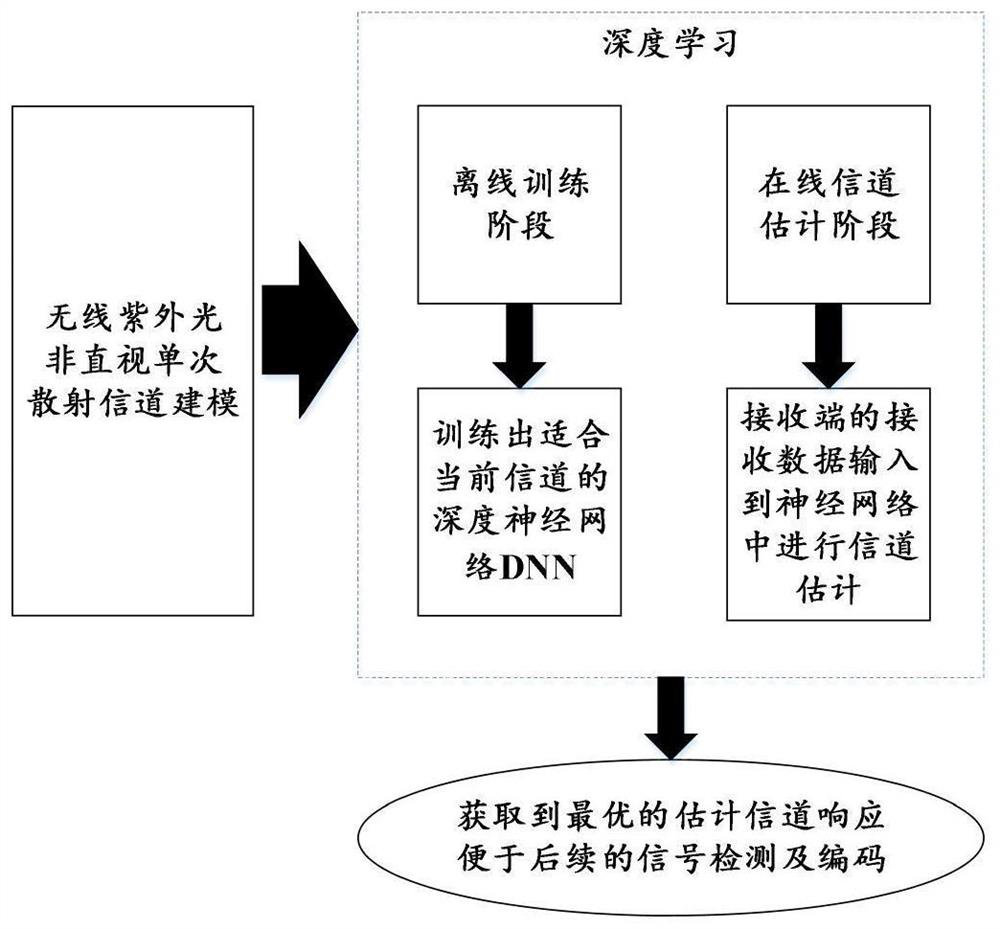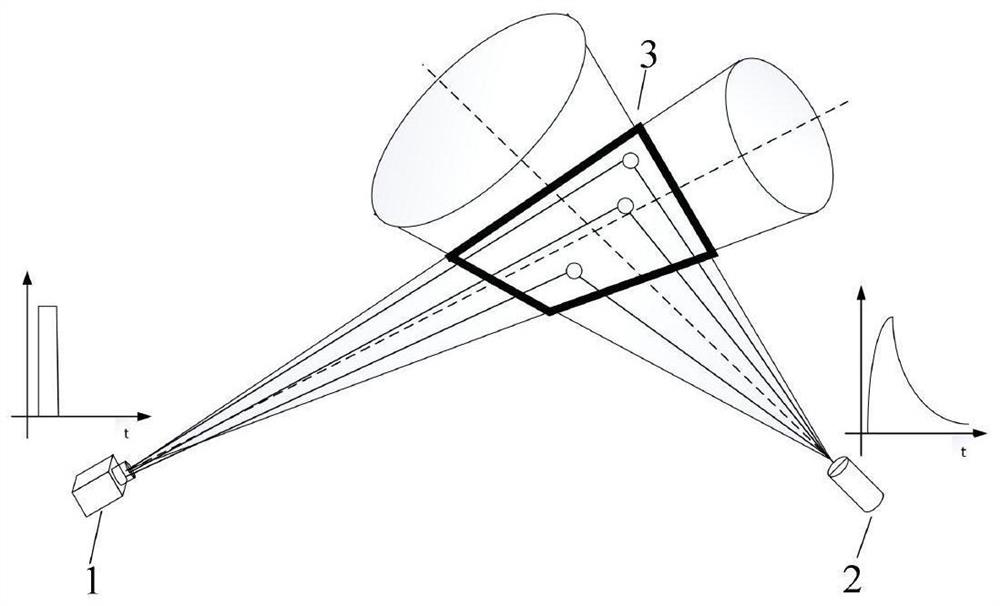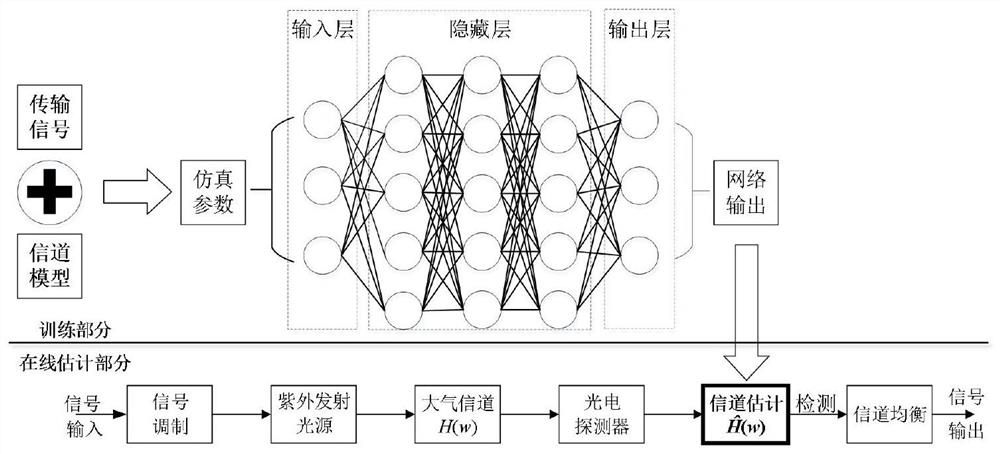Wireless ultraviolet light scattering channel estimation method based on deep learning
A technology of scattering channel and deep learning, applied in the field of channel estimation, can solve the problems of pulse broadening, crosstalk between information symbols, improve the system bit error rate, etc., achieve low system bit error rate and mean square error, suppress inter-symbol Crosstalk and multipath fading issues, effects of high system robustness
- Summary
- Abstract
- Description
- Claims
- Application Information
AI Technical Summary
Problems solved by technology
Method used
Image
Examples
Embodiment Construction
[0046] In order to make the above objects, features and advantages of the present invention more comprehensible, the present invention will be further described in detail below in conjunction with specific embodiments.
[0047] A wireless ultraviolet light scattering channel estimation method based on deep learning, the overall principle model diagram is as follows image 3 As shown, the specific steps are as follows:
[0048] Step 1. First, model and simulate the single scattering of wireless ultraviolet light to form a channel model of non-line-of-sight single scattering of ultraviolet light, and then add conditions such as noise and distortion, such as Figure 4 As shown, in the figure β T and beta R are the elevation angles of the transmitter and receiver, respectively, θ T is the half angle of beam divergence angle, θ R Half angle of receiving field of view, θ S is the scattering angle, V is the common scatterer, r 1 and r 2 are the distances from the sending end a...
PUM
 Login to View More
Login to View More Abstract
Description
Claims
Application Information
 Login to View More
Login to View More - Generate Ideas
- Intellectual Property
- Life Sciences
- Materials
- Tech Scout
- Unparalleled Data Quality
- Higher Quality Content
- 60% Fewer Hallucinations
Browse by: Latest US Patents, China's latest patents, Technical Efficacy Thesaurus, Application Domain, Technology Topic, Popular Technical Reports.
© 2025 PatSnap. All rights reserved.Legal|Privacy policy|Modern Slavery Act Transparency Statement|Sitemap|About US| Contact US: help@patsnap.com



